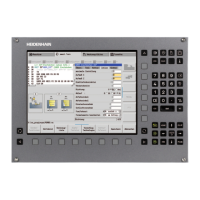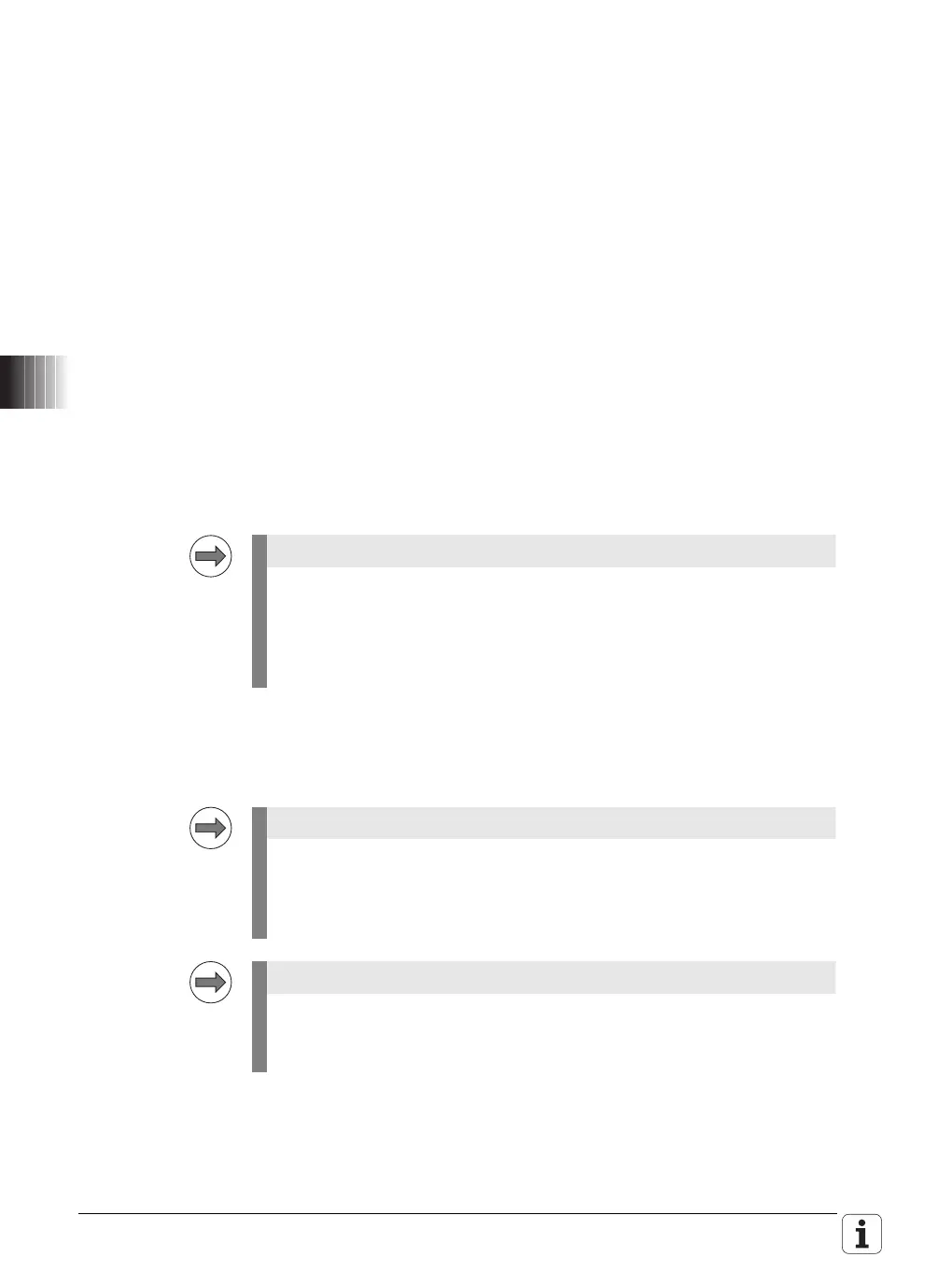834 HEIDENHAIN Technical Manual MANUALplus 620
Two axis-specific jerk parameters are available for very high requirements on
the surface quality. With the parameters MP_axPathJerk and
MP_axPathJerkHi (rapid traverse) you limit the axis-specific jerk on path
contours.
Regardless of the values of these two parameters, the values defined in
MP_maxPathJerk and MP_maxPathJerkHi (829) are always the maximum
limits for the jerk in traverse direction. You should therefore set
MP_maxPathJerk and MP_maxPathJerkHi to a value that is at least 1.75
times greater than the greatest value in MP_axPathJerk and
MP_axPathJerkHi to ensure maximum flexibility for jerk calculation, while
taking all traverse components of the axes into account. This ensures that only
the axis-specific jerk values go into effect.
MP_axPathJerk and MP_axPathJerkHi have a large influence on the running
smoothness, surface quality and machining time.
The MANUALplus 620 ensures that the nominal values do not exceed the
permissible axis jerk.
Adjusting MP_axPathJerk and MP_axPathJerkHi:
A suitable NC program should be used for the adjustment. The NC programs
"ff_100_[axis].nc" are already available on the control for feedforward
adjustment. Record the following error s-diff and the jerk j-nom caused by
a change in the feed rate ("ramp"), e.g. from 100 to 1000 mm/min.
Modify the setting in MP_axPathJerk until the resulting following error is
just acceptable enough.
The value set in MP_axPathJerkHi is typically five times higher than that in
MP_axPathJerk.
Recording the jerk is especially useful, because it allows you to check
whether there is actually a change in the jerk of the axis after
MP_axPathJerk has been changed. If the change in feed rate is too great,
it may happen that the maximum acceleration rather than the jerk limits the
ramp.
The following error s-diff should be no more than a few micrometers (µm)
to ensure smooth surfaces during acceleration and deceleration. If speed is
required, the parameter can be increased until the machine gets loud, or
the following error s-diff too large.
In the above procedure, which uses feed rate changes instead of only
positioning movements, disturbances from sliding friction and stiction
transitions are avoided.

